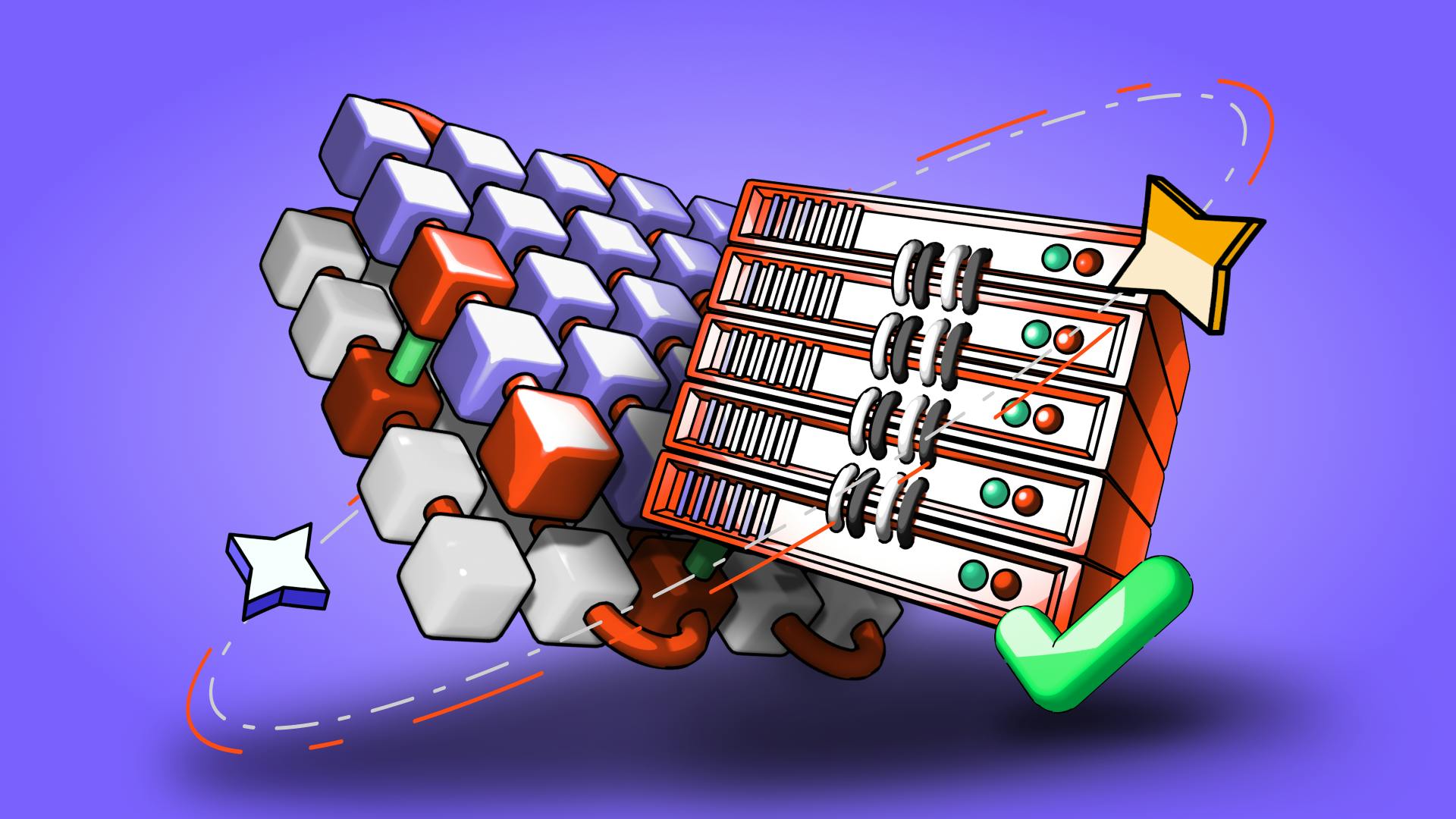The Pros and Cons of Different Blockchain Consensus Algorithms
December 5, 2025

by Kamil S
December 5, 2025
Blockchain technology has changed the way we think about digital transactions and data integrity, offering a decentralized platform where information is transparent, immutable, and secure. At the heart of this technology lies a critical component known as the consensus algorithm. This mechanism is what enables the decentralized nature of blockchain, allowing multiple parties to agree on the state of the ledger without the need for a central authority.
Consensus algorithms play an essential role in maintaining the integrity and security of the blockchain. They ensure that each transaction added to the network is the true version agreed upon by all participants in the network. This process not only prevents fraudulent transactions but also ensures that the distributed ledger accurately reflects the shared consensus of all network participants. Given the diversity of blockchain applications, ranging from cryptocurrencies to supply chain management, the choice of consensus algorithm can significantly impact the performance, security, and governance of a blockchain network.
The purpose of consensus algorithms extends beyond merely validating transactions. They are instrumental in achieving fault tolerance within the blockchain, making the network resilient to attacks and failures. By requiring that a majority (or in some cases, all) of the participants agree on the ledger's state, consensus algorithms protect the network from malicious actors and ensure that no single entity can control or alter the blockchain unilaterally.
Understanding the various consensus algorithms and their respective pros and cons becomes essential for anyone looking to leverage blockchain for digital innovation. This blog explores some of the most popular consensus algorithms, shedding light on how they work and the unique advantages and challenges they bring to blockchain networks.
Proof of Work (PoW) is a consensus algorithm foundational to the operation of several blockchain networks, most notably Bitcoin. It secures the network and validates transactions through a process that requires participants, known as miners, to solve complex mathematical puzzles. The solution to these puzzles requires significant computational effort and energy, acting as "work" that proves the miner's commitment to the network.
When a miner solves the puzzle, they are permitted to add a new block of transactions to the blockchain. This block is then verified by other network participants, ensuring its validity. The successful miner is rewarded with a certain amount of the blockchain's native cryptocurrency, incentivizing participation and security.
Security: PoW offers a high level of security. The computational work required to add blocks to the blockchain makes it exceedingly difficult for malicious actors to alter the blockchain's history.
To do so, an attacker would need to control more than half of the network's computing power, a feat known as a 51% attack, which is practically infeasible for large networks due to the immense cost and energy requirements.
Decentralization: By allowing anyone with sufficient computing power to participate in mining, PoW promotes decentralization. It prevents any single entity from gaining control over the blockchain, ensuring that the network remains open and distributed.
Energy Consumption: The major downside of PoW is its substantial energy requirement. The process of solving mathematical puzzles consumes a vast amount of electricity, leading to concerns about the environmental impact of PoW-based cryptocurrencies.
However, it's important to note the evolving landscape of energy consumption within these networks. As of late, there has been a noticeable shift towards more sustainable practices, particularly in Bitcoin mining. Innovations such as using flare gas for energy - a byproduct of oil extraction that would otherwise be wasted and cause substantially more CO2 emissions, along with an increasing reliance on renewable energy sources, signal a transition towards greener and more environmentally friendly mining operations. This shift not only aims to mitigate the environmental concerns associated with PoW but also reflects the broader commitment of the crypto community to sustainability.
Scalability Issues: PoW networks typically have lower transaction throughput and longer confirmation times compared to other consensus mechanisms. This is partly due to the time and computational power required to solve puzzles, which can lead to bottlenecks and increased transaction fees during times of high demand.
While Proof of Work has been instrumental in the development and security of blockchain technology, its drawbacks, particularly regarding energy consumption and scalability, have prompted the exploration of alternative consensus algorithms. These alternatives aim to retain the benefits of security and decentralization while addressing PoW's limitations.
Unlike Proof of Work (PoW), which requires participants to solve complex mathematical problems, PoS achieves consensus by requiring participants, known as validators, to "stake" a certain amount of the blockchain's native cryptocurrency as collateral. The stake acts as both a security mechanism, discouraging dishonest behavior by putting validators' own holdings at risk, and a method for choosing who validates the next block. The specifics can vary however, with some networks incorporating elements such as coin age, randomization, and other criteria to decide on validators, thereby not relying solely on the size of the stake.
Energy Efficiency: One of the primary advantages of PoS is its energy efficiency. Because it does not require energy-intensive computational work, PoS is significantly more environmentally friendly than PoW, reducing the blockchain's carbon footprint.
Scalability: PoS may allow for faster transaction processing times and higher transaction throughput compared to PoW, addressing some of the scalability issues faced by traditional blockchain networks. This makes PoS-based blockchains better suited for a wider range of applications, including those requiring quick transaction finality.
Potential for Centralization: A notable concern with PoS is the potential for network centralization. Since validators may be chosen based on the amount of currency they stake, those with larger holdings can have disproportionately high influence, potentially leading to a centralization of power within a small group of wealthy validators.
Security Concerns in Early Stages: While PoS is generally considered secure, new PoS networks can be vulnerable in their early stages before a diverse and distributed validator pool is established. There's also the risk of various attacks specific to PoS, such as the "nothing at stake" problem, where validators might try to manipulate the network without adequate penalties.
While Proof of Stake represents an alternative to Proof of Work that has already been established by major networks like Ethereum, it comes with its own set of challenges that need to be carefully managed. It's likely that adaptations and innovations within the PoS model will address concerns such as centralization, further solidifying its role in the future of decentralized networks.
However, the Proof of Work system has major implications for true decentralization and security: By incorporating a thermo-dynamic dimension to the consensus (the energy requirements of mining) it introduces a physical cost to attacks, making them not only digitally but also economically impractical. This energy-intensive process, while criticized for its environmental impact, serves as a crucial barrier against malicious activities, securing the network by aligning incentives with the physical world.
Afterall, Bitcoin is the strongest digital network in the world. Many high-profile organizations, including NASA, various entities of the U.S. government, Apple, Google, and Microsoft, have experienced cybersecurity breaches over the years. On the other hand, the Bitcoin network itself has not been compromised in the sense that its underlying blockchain protocol has remained secure.
Delegated Proof of Stake (DPoS) is an evolution of the Proof of Stake (PoS) consensus mechanism, designed to enhance efficiency and scalability in blockchain networks. DPoS streamlines the decision-making process by allowing token holders to elect a limited number of delegates or validators. These elected validators are responsible for validating transactions and securing the network, operating on behalf of the entire community.
In a DPoS system, token holders leverage their stake to vote for a certain number of delegates, with the weight of each vote being proportional to the amount of cryptocurrency they hold. This voting system ensures that only the most trusted and efficient validators manage the blockchain, as their continued role as delegates depends on the ongoing approval of the token holders. Validators are incentivized to act in the network's best interest; misbehavior or poor performance can lead to being voted out in favor of more reliable candidates.
High Transaction Throughput: By limiting the number of nodes that need to reach consensus to a manageable number of elected validators, DPoS can process transactions more quickly than traditional PoS or PoW systems. This efficiency translates into higher transaction throughput, making DPoS suitable for applications requiring fast transaction times.
Scalability: DPoS networks can scale more effectively to accommodate growing numbers of transactions. The reduced number of validators simplifies the consensus process, allowing the network to handle increased loads without significant increases in transaction confirmation times or costs.
Increased Centralization Risk: The election process in DPoS can lead to a concentration of power among a small number of validators, particularly if a few large stakeholders have a disproportionate influence on the election outcomes. This centralization can undermine the decentralized ethos of blockchain technology and introduce vulnerabilities.
Fewer Nodes: The efficiency of DPoS comes at the cost of having fewer nodes involved in the consensus process, which can affect the network's overall resilience and security. With fewer nodes, the network may be more susceptible to collusion or security breaches, as the barrier to controlling a majority of the validating power is lower than in networks with a larger number of nodes participating in consensus.
Delegated Proof of Stake represents a significant innovation in blockchain consensus mechanisms, offering solutions to the scalability and efficiency challenges faced by earlier systems. However, the trade-offs in terms of increased centralization and the implications for network security and governance highlight the importance of careful design and governance structures in DPoS-based blockchain networks. As with any consensus model, the ultimate effectiveness of DPoS depends on the specific implementation and the measures in place to mitigate its inherent limitations.
Proof of Authority (PoA) is a consensus mechanism utilized in blockchain networks, where transactions and blocks are validated by approved accounts, known as validators. Unlike Proof of Work (PoW) or Proof of Stake (PoS), which rely on cryptographic puzzles or token staking, PoA's trust model is based on the reputation of its validators. Validators are usually chosen through a rigorous vetting process, considering factors such as identity verification and their commitment to the network.
In a PoA-based blockchain, the right to write new blocks is given to a few nodes that have been explicitly authorized to do so. These nodes are selected because of their proven integrity and reliability, making the validation process faster and more energy-efficient. The operation of PoA hinges on a mutual agreement and trust in these appointed validators to act in the network's best interest, ensuring security and continuity.
Fast Transactions: PoA enables quick transaction validation times due to the limited number of nodes responsible for processing transactions. This streamlined approach reduces the time it takes for transactions to be confirmed, making PoA ideal for networks requiring high throughput.
Energy Efficiency: Since PoA does not require solving complex cryptographic puzzles, it significantly reduces the energy consumption associated with maintaining the network. This makes PoA a more sustainable alternative to energy-intensive consensus mechanisms like PoW.
Centralization: One of the main criticisms of PoA is its tendency towards centralization. With only a few approved validators, the network might become centralized, which is at odds with the decentralized ethos of blockchain technology. This centralization can lead to concerns about the abuse of power and the potential for manipulation.
Trust Required in Validators: PoA's effectiveness heavily relies on the integrity and reliability of its validators. Users must place a considerable amount of trust in these validators to act honestly and maintain the network's security. This requirement contrasts with trustless systems like PoW, where the consensus mechanism itself ensures security without needing to trust individual participants.
This article has navigated through the complex landscape of blockchain consensus algorithms, shedding light on their fundamental roles, operational mechanisms, and the diverse array of models available, such as Proof of Work (PoW), Proof of Stake (PoS), Delegated Proof of Stake (DPoS), and Proof of Authority (PoA). Each consensus algorithm brings its unique strengths and challenges to the table:
- PoW is celebrated for its unparalleled security and decentralized nature but criticized for its energy consumption and scalability issues.
- PoS offers a more energy-efficient and scalable alternative, though it grapples with potential centralization and security concerns in its nascent stages.
- DPoS further enhances transaction speed and scalability but at the expense of increased centralization risks and a reduced number of participating nodes.
- PoA stands out for its fast transactions and minimal energy requirements but requires a high level of trust in a few selected validators, posing risks of centralization.
The evolving nature of blockchain consensus algorithms
The landscape of blockchain consensus algorithms is in a constant state of evolution, reflecting the growing and shifting needs of the blockchain ecosystem. As technology advances and the applications of blockchain diversify, selecting the appropriate consensus algorithm becomes crucial. The choice of algorithm can significantly impact a blockchain network's performance, security, and governance.
For applications that prioritize environmental sustainability and fast transactions, PoS, DPoS, or PoA might be preferred. Conversely, networks that value maximum security and decentralization may opt for PoW, despite its drawbacks. The decision must align with the specific requirements, goals, and values of the blockchain application in question.
As we look to the future, it's clear that no single consensus algorithm will suit all purposes. The ongoing innovation and experimentation in this field are vital for addressing the existing limitations of current models and for the development of new mechanisms that balance efficiency, security, decentralization, and sustainability. The diversity of consensus algorithms enriches the blockchain space, offering multiple pathways to harness the transformative potential of blockchain technology across various sectors and use cases.
Join the Coinmetro community on Discord and Telegram, where forward-thinking traders and investors gather to share insights, explore new opportunities, and dive deep into the world of cryptocurrencies. Should you need any help, feel free to reach out to our world-class Customer Support Team via 24/7 live chat or email at hello@coinmetro.com.
To become a Coinmetro user today, Sign Up now, or head to our new Exchange if you are already registered and experience our premium trading platform.
Tags
Related Articles

Regulatory Sandboxes: Fostering Crypto Innovation Within Legal Frameworks
The cryptocurrency industry’s fast rise fuels an important debate. Innovation aims to transform finance, enhancing speed and access. Yet, regulators…
5m

Crypto Options Trading: Strategies and Market Insights
Cryptocurrency markets have rapidly expanded beyond simple buying and selling. One of the most significant developments has been the rise of…
6m

The Rise of Social-Fi: Blending Social Media with Decentralized Finance
In recent years, social media and finance have started to merge, creating Social-Fi. This concept blends the engagement of social platforms with…
6m

DeFi Insurance Platforms to Watch in 2024
Decentralized Finance (DeFi) insurance addresses the growing need for insurance against hacks, smart contract failures, and other DeFi-related risks.…
7m